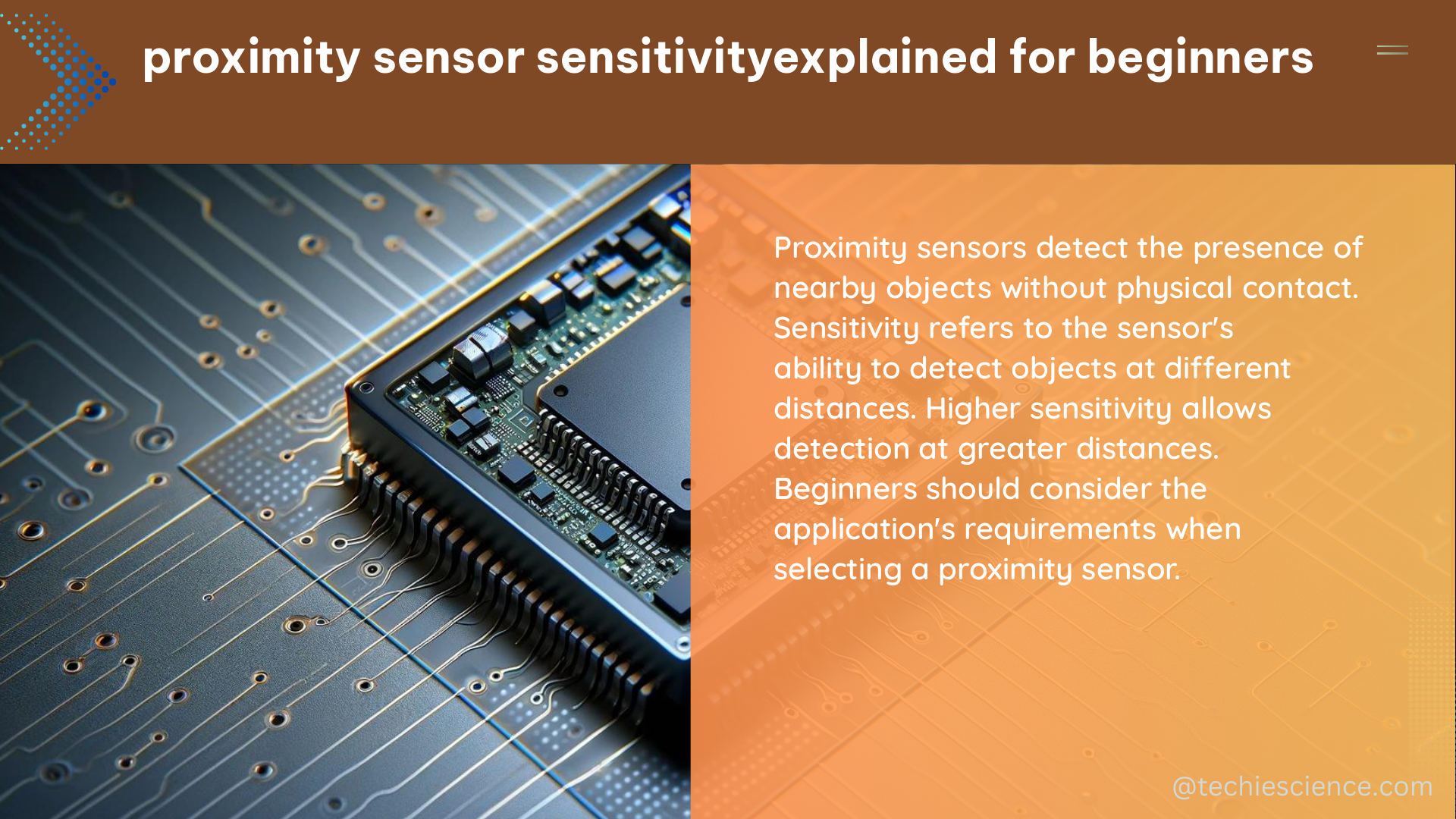Proximity sensors are essential components in a wide range of applications, from smartphones and home automation to industrial machinery and robotics. Understanding the sensitivity of these sensors is crucial for ensuring accurate and reliable performance. In this comprehensive guide, we’ll delve into the intricacies of proximity sensor sensitivity, equipping you with the knowledge to optimize their usage and unlock their full potential.
Understanding Proximity Sensor Sensitivity
Proximity sensor sensitivity refers to the sensor’s ability to detect changes in the proximity of an object and convert those changes into an electrical signal. This sensitivity is typically measured in terms of a sensitivity range, which specifies the minimum and maximum distances the sensor can detect.
Sensitivity Range
The sensitivity range of a proximity sensor is a crucial specification that determines its practical applications. For example, a proximity sensor with a range of 0 to 10 cm can detect objects within that distance, while a sensor with a range of 0 to 1 m can cover a larger area. The choice of sensitivity range depends on the specific requirements of the application.
Resolution
In addition to the sensitivity range, proximity sensors are also characterized by their resolution, which is the smallest change in distance that the sensor can detect. For instance, a proximity sensor with a resolution of 0.1 cm can detect changes in distance as small as 0.1 cm. A higher resolution indicates a more sensitive sensor, as it can provide more precise distance measurements.
Response Time
Another important factor in proximity sensor sensitivity is the response time, which is the time it takes for the sensor to detect a change in proximity and output a corresponding electrical signal. A lower response time indicates a more sensitive sensor, as it can react more quickly to changes in the environment.
Environmental Factors Affecting Proximity Sensor Sensitivity

The sensitivity of a proximity sensor can be influenced by various environmental factors, including temperature, humidity, and electromagnetic interference (EMI). Understanding these factors is crucial for ensuring the reliable performance of proximity sensors in different applications.
Temperature
Temperature can have a significant impact on the sensitivity of a proximity sensor. Changes in temperature can affect the sensor’s internal components, leading to variations in the output signal. It is essential to consider the operating temperature range of the sensor and ensure that it is suitable for the intended application.
Humidity
Humidity can also affect the performance of proximity sensors, particularly those that rely on capacitive or optical sensing principles. Excessive moisture in the environment can interfere with the sensor’s ability to accurately detect changes in proximity, leading to false readings or reduced sensitivity.
Electromagnetic Interference (EMI)
Proximity sensors can be susceptible to electromagnetic interference, which can disrupt the sensor’s operation and reduce its sensitivity. This is particularly important in industrial environments where there may be a high concentration of electrical equipment and machinery.
Optimizing Proximity Sensor Sensitivity
To ensure optimal performance of proximity sensors, it is essential to consider the following factors:
Sensor Selection
Choosing the right proximity sensor for the application is crucial. Factors such as sensitivity range, resolution, and response time should be carefully evaluated to match the specific requirements of the project.
Environmental Considerations
Carefully considering the environmental factors that can affect proximity sensor sensitivity, such as temperature, humidity, and EMI, is essential for ensuring reliable performance.
Calibration and Maintenance
Regular calibration and maintenance of proximity sensors can help maintain their sensitivity and accuracy over time. This may include adjusting the sensor’s settings, cleaning the sensing surface, and replacing worn or damaged components.
DIY Experiments
Performing DIY experiments with proximity sensors can be a valuable learning experience for beginners. By testing the sensor’s functionality against different objects, orientations, and positions, users can gain a deeper understanding of how these sensors work and how to optimize their performance.
Conclusion
Proximity sensor sensitivity is a critical aspect of sensor performance, and understanding its intricacies is essential for effectively utilizing these devices in a wide range of applications. By mastering the concepts of sensitivity range, resolution, and response time, as well as the environmental factors that can affect sensor performance, beginners can unlock the full potential of proximity sensors and ensure reliable and accurate distance measurements.
Reference:
- How does Android’s proximity sensor work?
- A Guide to Smartphone Sensors
- Significance of sensors for Industry 4.0: Roles, capabilities, and applications

The lambdageeks.com Core SME Team is a group of experienced subject matter experts from diverse scientific and technical fields including Physics, Chemistry, Technology,Electronics & Electrical Engineering, Automotive, Mechanical Engineering. Our team collaborates to create high-quality, well-researched articles on a wide range of science and technology topics for the lambdageeks.com website.
All Our Senior SME are having more than 7 Years of experience in the respective fields . They are either Working Industry Professionals or assocaited With different Universities. Refer Our Authors Page to get to know About our Core SMEs.